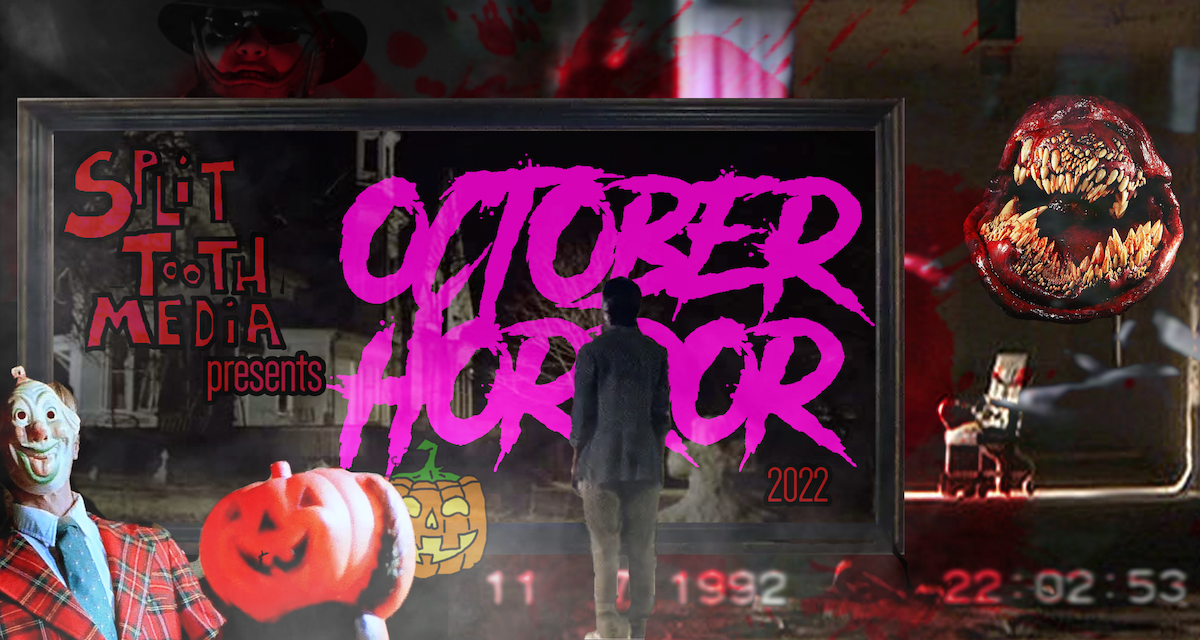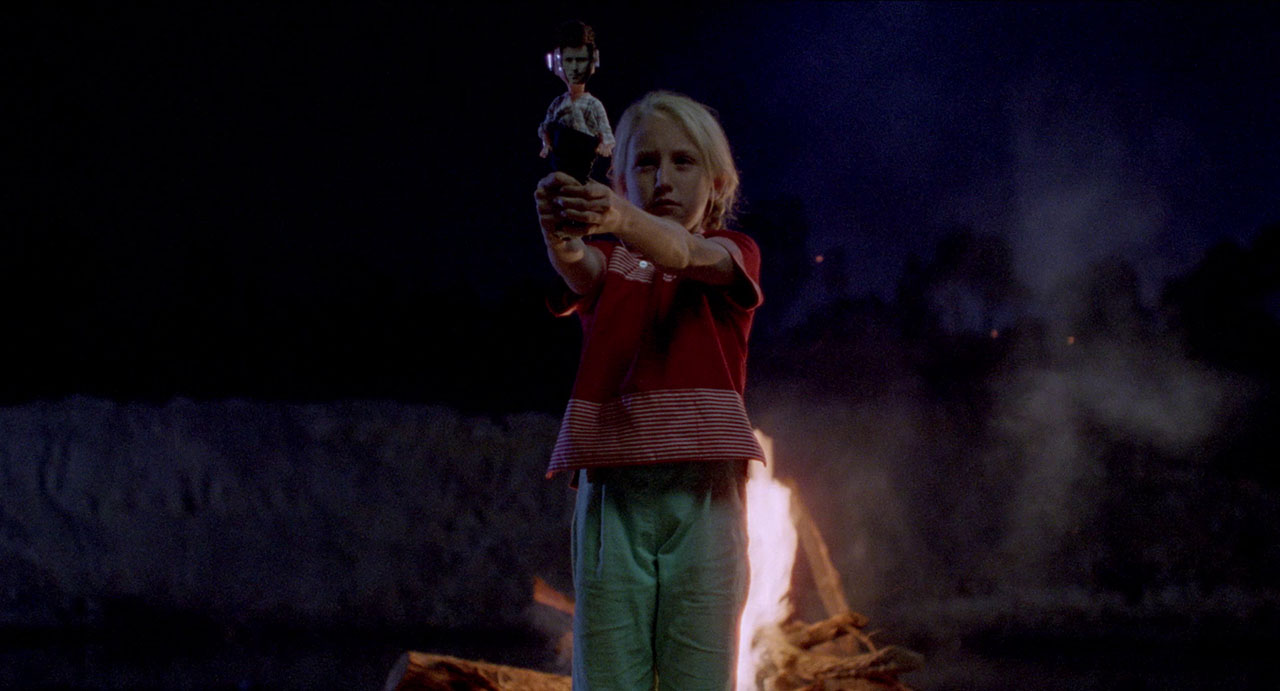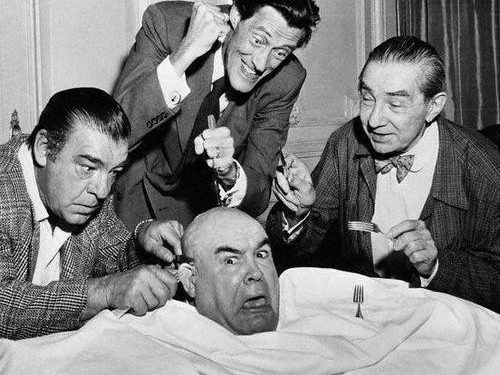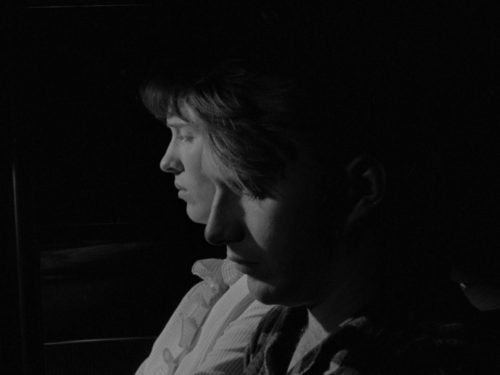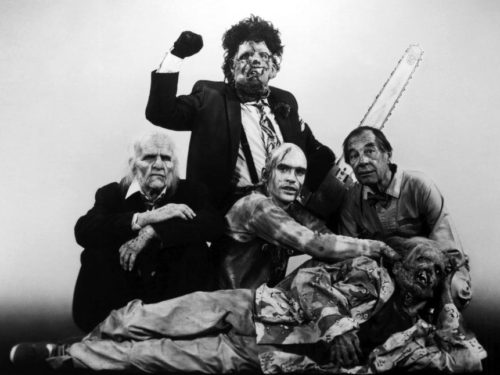A hidden gem of Australian folk horror, Celia follows a young girl as she navigates a fractured world that meets the needs of its people with scapegoats rather than truth
A photograph with four figures. Only the young girl is in focus, staring out of the picture with clear eyes. The three adults that surround her are a blur.
A selfish father diseased by insidious political rhetoric.
A mother muted by an inauthentic life of submission and convention.
Gran, the girl’s fierce protector, has passed away in the night.
We see the portrait on the wall of Gran’s bedroom in the first scene of the film, when Celia brings Gran her morning cup of tea and finds her dead.
Celia (1989), a film by director Ann Turner, tells the story of a child’s first encounters with loss and grief. The film is set in post-war Australia during the communist ‘witch-hunts’ of the 1950s. There is also an invasive rabbit population decimating vegetation and damaging the economy in the Melbourne area where Celia is set. Within this political landscape, the film explores the question of where danger truly lies. We search for an answer in the blur of this complex and corrupt world, as seen through a child’s wide-open eyes.
The film takes Celia (Rebecca Smart) through a series of painful and often absurd losses unmediated by explanation or emotional support. First she loses her Gran (Margaret Ricketts) to death. Through each hardship, Celia is faced with emotional denial and prescribed conformity that leaves her with no healthy way to process her losses. She is denied time to grieve, being forced to have a party. She isn’t allowed space to grieve, being banned from her Gran’s old bedroom where she finds comfort.
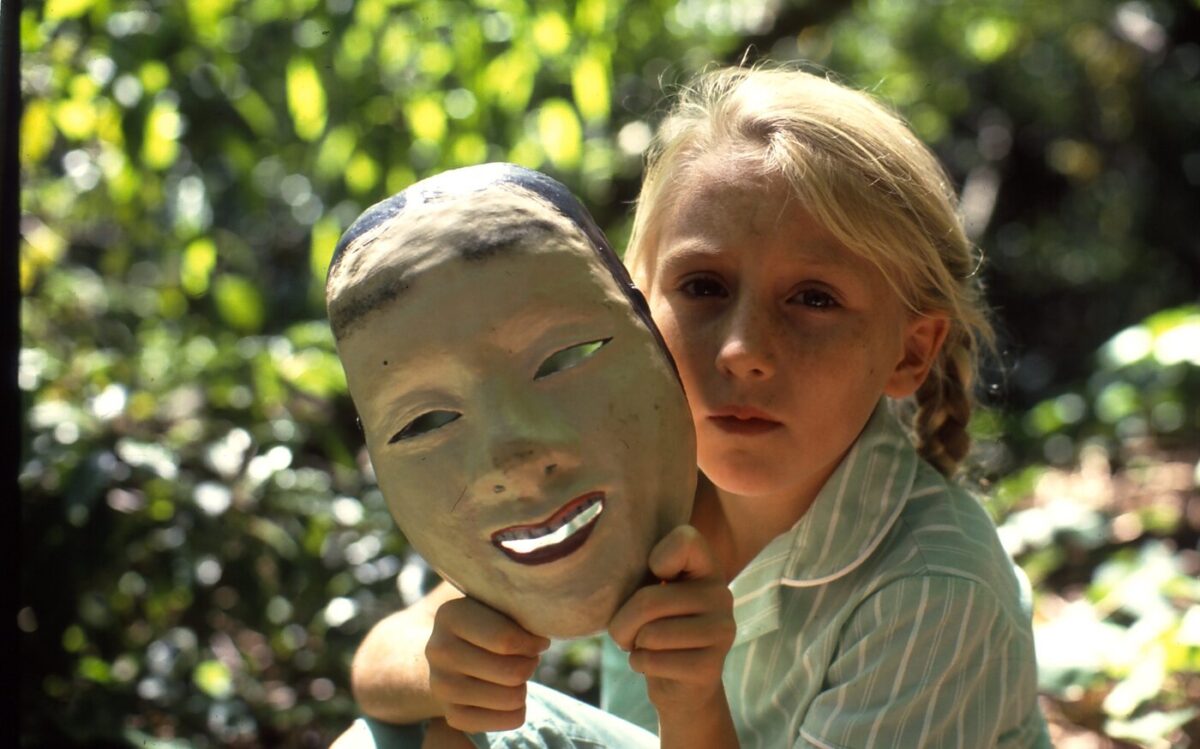
In this void, Celia begins to develop her own sort of spirituality, in only the way a nine-year-old can. There is an access to a sense of magic that comes in Celia’s grief. Through it, she encounters a new depth of connection that surpasses the material bounds of her life. She plays with the ghost of her Gran at a nearby rock quarry and she develops such a strong relationship with the tale of the Hobyahs that it begins to seep into her perception of reality.
This is where the film places one foot in the territory of folk horror, although Turner intentionally eschews typical genres. The Hobyahs is a fairytale about a troupe of bogeyman-like creatures that enter homes in the night and steal away loved ones. In the story, a couple’s dog barks when the Hobyahs come and this scares them away; However, the man is woken by the barking and instead of looking for what it may be alerting him to, he blames the dog and takes off its head. So when the Hobyahs come again, they take the woman, or in some versions of the story, their child, and the man sees how wrong he was. He gives the dog back his head so that he can use his restored senses to track down the stolen woman.
The story of the Hobyahs is terrifyingly reflective of the way the society in Celia exacerbates problems of the people by cutting off the head of whatever is “noisy” or visible rather than looking at the actual source of a problem. As those people and things that make Celia feel secure are stripped away, the idea of the Hobyahs coming for her with no guardian to bark or protect, becomes a pervasive part of Celia’s psyche, to the point of true danger.
Early on, Celia has a nightmare about the Hobyahs scratching at her window and instead of calling for her mother or father, she calls out for Gran. Celia obviously felt protected by her. Now she is left more vulnerable to what she fears. She begins to create her own sort of rituals to cope with this new reality.
There is a desolate rock quarry that serves as a sort of parallel stage where the children can work through their own reflections of the confusing world around them. At different times, it stands as their playground, their battlefield, their church, and their courthouse.
It is here at the quarry that Celia first plays with the ghost of Gran. She brings a mask from Gran’s bedroom wall and pronounces it to have magic powers. As Celia’s untended grief mounts and festers with each new loss, the quarry is also where we see her come to burn poppets of her enemies in a ritual of vengeance and, later, bury her beloved rabbit and vow revenge upon its kidnapper.
A lot of the story of Celia is told through scenes of play, tenderly exploring the intensity of childhood make-believe. The children in the story grapple with grief, loss, and ideas of punishment or blame. They take turns mimicking overheard political rhetoric and even enact their own play-versions of the violence, dehumanization, and warped ‘justice’ they observe.
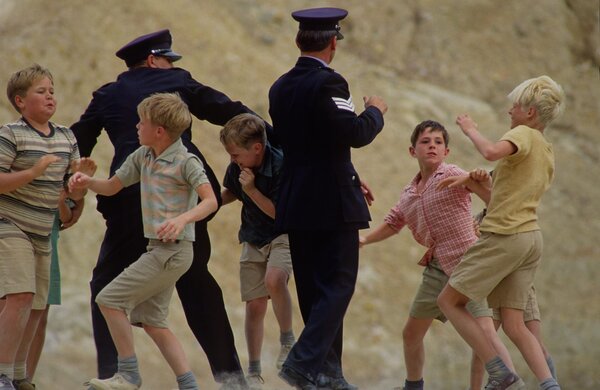
Throughout the film, Celia delves more into her rich imaginary life as her true needs remain neglected by the adult world. A theme emerges both for Celia personally, and in the world around her, where someone has a need and instead of having it met, they are given something else — a shiny token, a colorful bandage, or a common enemy to blame. These serve as distractions rather than true help. It is this pattern that allows grief and anger to fester unmitigated within our young protagonist and eventually leads her to the extreme act of murder.
Celia creates a microcosm for us to observe how a broken system leads her to violent behavior. The pain of Celia, a child, is more accessible to us than if we only saw the masked and warped pain of the adults that surround her. This is Celia’s story, but it is also the story of a horrifically fractured world that meets the needs of its people with scapegoats instead of any truth, justice, or actual aid.
In 1950’s Australia, the shadow of war hung over families. Men would come home having been brutalized in prison camps and nothing was talked about. They would have intensely close and unquestionable bonds with their brothers from the war, but it would be masked in what Turner has called “Australian humor” with no mention of the dark pasts that haunted them.
As mentioned previously, when Celia begins to experience true losses, she is also expected to ignore them. It is a natural extension of how the parents’ own experiences have been treated. While ignoring any actual roots of the stress they carry with them, unkempt anger and grief are domesticated and come out through suburban acts of violence. Celia grows up in a world where corporal punishment and controlling regulations are commonplace.
Her young world is constantly politicized and torn apart in confusing ways. Her father, a war veteran, has come back home infused with a sense of blind patriotism and loyalty. He won’t let Celia have a pet bunny because the government rhetoric about the invasive wild rabbit species is prevalent. In a poignant conversation between Celia and her dad (Nicholas Eadie), he sits at her bedside the night before her birthday and calls rabbits “vermin.” Celia replies, “The pet white ones aren’t.”
The ridiculous grandstanding surrounding the banning of pet rabbits is such a perfectly absurd reflection of the political climate Celia grows up in, particularly relating to the treatment of the Communist Party of Australia. Wild rabbits are harming the countryside, so it is ruled that all rabbits, including pets, must be exterminated. The Communist party itself was outright banned in a referendum a few years before events of the film take place. The communist regimes Australians fought against in the war were harmful, therefore all communist or leftist thought must be called out as evil. There is a dehumanization through this deliberate ignorance of differences within these groups; there can be no moralistic gray area.
Celia’s father, Ray, encapsulates the psychic tension that builds from this environment. He carries trauma not only from the war, but also from a childhood being raised by a leftist mother in a right-wing community. He tells Celia in one scene that life was hell for him when he was her age. He obviously loves his daughter, but his attempts to protect her come out warped by fear and clouded by a confused and internalized ideology. In trying to protect Celia, he actually replicates the torment he went through as a child.
Throughout the film we watch him act out misdirected, desperate attempts to protect himself and his daughter in a world where naming true danger is incredibly difficult to do. Just as Celia manifests her Hobyah bogeyman as a place to put her fear and anger, her father cultivates a concocted, inflated sense of danger around rabbits and communists.
The Tanner family that moves in next door with three children become an important source of support for Celia. It is here that she’s given an environment that is more open to her feelings and needs. The mother, Alice (Victoria Longley), becomes a source of emotional stability for Celia. She listens to Celia in a way that other adults in the film do not. She creates a safe space for her to be joyful and find reprieve.
Ray, in his unhappiness, is constantly hitting on Alice, creating tension between the families. When he finds out that the Tanner family has communist ties, he first bans Celia from seeing the family. He buys her the rabbit she always wanted, but says she can only have it if she stays away from the Tanners. When Alice refuses his desperate mix of scolding and advances, Ray reports her husband’s communist beliefs and has him fired from his job at their shared workplace.
Again, Celia is robbed of what’s important to her by confusing political influences and emotionally ill-equipped adults. The Tanners must move away. Her protection and support stolen once again, one of the Tanner children leaves her with the parting words, “Watch Out for Hobyahs.”
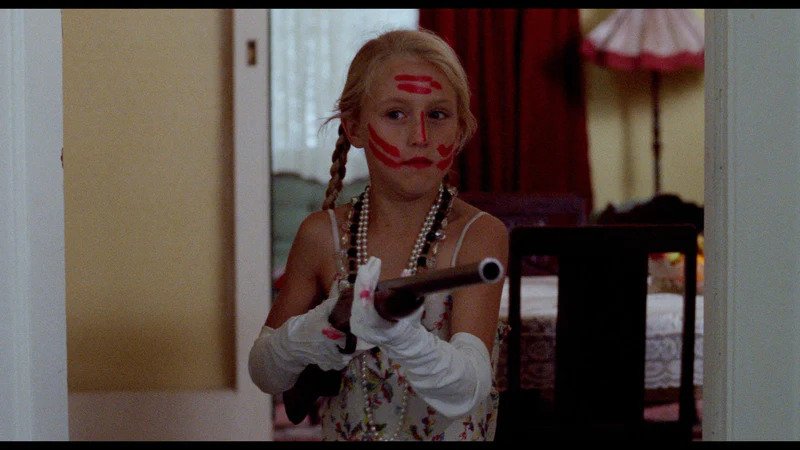
Celia’s father and the society around her seem to be fixated on rooting out perceived danger and punishing blamed parties to enact “justice.”
Where does the danger in Celia truly lie?
It is not communism or a pet rabbit that leads Celia down the unlikely path to murder. It is the way in which the neglectful society thrashes her with its brutality and offers her no other models of seeking solace other than blame and retribution.
When Ray gets Karl Tanner fired, Celia can’t admit that it is her loving father that did it and chooses to blame her ‘Uncle’ John — a cop whose daughter bullies Celia throughout the film and even brands her bunny at one point. Celia decides her father must have told Uncle John about the Tanners, so he must be the culprit that got Karl fired.
So now Uncle John has attacked her comrades. Celia mimics the loyalty her father has to his wartime friends and the scapegoating she’s seen take place around her in choosing an ultimate villain of her story. She leads the children in a magical curse against Uncle John. They put a needle through the head of a cop poppet.
In Celia’s eyes, Uncle John has forced her friends to move away. Then, when Premier Bolte bans pet rabbits in Victoria in an absurd political stunt, John enforces this personally and steals away Celia’s beloved pet, Murgatroyd. When Celia is finally allowed to collect her pet from a holding cage at the zoo, she finds Murgatroyd dead in the overcrowded rabbit pen. She buries Murgatroyd at the quarry and vows vengeance upon the one she blames. Later, in a fevered state, she cannot see Uncle John as anything but a Hobyah and shoots him dead with her father’s rifle.
Terror lies in realizing that Celia’s conflation of Uncle John with the Hobyah is not too far a leap in logic to the villainization of political dissenters. But the greatest horror lies in watching the mental state of the spunky, irreverent Celia devolve into violent delusion; It is in how understandable this child’s dissent can be in a world so full of loss and dehumanization.
In an early scene, Celia gets in trouble and is made to write “I will not misbehave” repeatedly on a piece of paper. Smirking, imperfect but perfectly true, Celia instead writes “I will ___ misbehave” and later cheekily fills in the “not”s. The final scenes show us a more hardened, darker, dangerous Celia.
In the second to last scene of the film, she stands face-to-face with Stephanie, the daughter of the man she murdered, and is told to close her eyes and pray. But she doesn’t close her eyes for long. We watch her open gaze. It is a different look than that of the curious Celia’s eyes featured in countless shots throughout the film. Finally, she closes them and plays along.
Celia then leads the children in a mock execution of the uncaught murderer of Stephanie’s father. At the quarry, they string up one friend in a noose and then cut her down, enacting a performative play justice as a sort of catharsis. Then they run off in laughter.
Still an irreverent child, Celia has started to play the games of her society — its stifled grief and anger, its impersonal brutality and its corrupt sense of justice — too well. The children’s games are a reflecting pool for the world outside the quarry.
Celia is available on Blu-ray as part of Severin Films’ All the Haunts Be Ours: A Compendium of Folk Horror box set.
Stay up to date with all things Split Tooth Media and follow Snow on Twitter
(Split Tooth may earn a commission from purchases made through affiliate links on our site.)
Find the complete October Horror 2022 series here:
